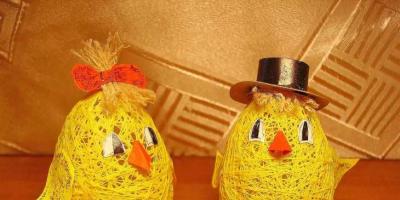Zelfira Tregulova, an art critic, curator of international museum projects, was appointed head of one of the country's leading museums.
Before her new appointment, she headed the museum and exhibition center.
Zelfira Ismailovna was born on June 13, 1955 in Riga. In 1977 she graduated from the art history department of the Faculty of History of Moscow State University, and in 1981 – graduate school. In 1993–1994, she completed an internship at the Solomon R. Guggenheim Museum in New York. In 1998–2000, she was the head of the department of foreign relations and exhibitions at. From 2002 to 2013 she was Deputy General Director for Exhibition Work and International Relations at.
Over the past 11 years, the Kremlin has hosted a number of major international projects that introduced Russians to the treasures of the Ottoman sultans, Chinese emperors and representatives of the Medici family, as well as the art of the jeweler Rene Lalique and fashion king Paul Poiret, and the works of the sculptor Henry Moore.
In addition, Zelfira Tregulova has more than once acted as curator of a number of international projects. Thus, at the exhibition “Jack of Diamonds: Between Cézanne and the Avant-Garde”, shown in Monte Carlo, residents of Monaco saw for the first time the paintings of Russian avant-garde artists Pyotr Konchalovsky, Aristarkh Lentulov, Ilya Mashkov, Alexander Kuprin, Robert Falk. In turn, the exhibition “Vision of Dance”, dedicated to the 100th anniversary of Sergei Diaghilev’s “Russian Seasons”, brought from Monaco to Russia, for the first time showed the viewer not only sketches of the sets by Alexander Benois, Leon Bakst and Pablo Picasso for Diaghilev’s productions, but also real costumes to the ballets “Scheherazade” and “The Golden Cockerel” by N.A. Rimsky-Korsakov and “The Rite of Spring” by I.F. Stravinsky, in which the great dancers Anna Pavlova, Tamara Karsavina, Ida Rubinstein shone.
Also in her curatorial baggage are the exhibitions “Amazons of the Avant-Garde”, shown at the Guggenheim Museums in Berlin, Venice, New York and the Royal Academy in London, “Kazimir Malevich and the Russian Avant-Garde”, held at the Stedelijk Museum in Amsterdam and the Tate Modern in London.
“There are only a few people of this level of competence in the country”
Vladimir Medinsky
This is what the Minister of Culture said when he appointed Zelfira Tregulova as head of the ROSIZO center a year and a half ago. And this is not an exaggeration.
During this time, the center has implemented 82 exhibition projects, including the “Look into the Eyes of War” exhibition, recognized by all media as the best exhibition. Russia in the First World War in newsreels, photographs, documents” and several foreign ones: “Viktor Popkov. 1932–1974", shown in Venice and London, "Palladio and Russia. From Baroque to Modernism" (Venice) and "Russian Switzerland" (Geneva). In addition, in the past year, ROSIZO, together with the Ministry of Culture of the Russian Federation, held the Intermuseum 2014 festival, which attracted a record number of visitors - more than 14 thousand people during the week of work.
A passionate art critic and passionate about her work, Zelfira Ismailovna believes that “a museum is not what it is usually imagined to be: traditional and conservative. Today museums are living institutions that keep up with the times, appealing to young people, children, and everyone.” A specialist of the highest level and extensive knowledge, she loves to bring to life the most unusual projects: “I’m interested in doing not only exhibitions for export, but also here in Russia, and exhibitions of a slightly different type than are being done now,” she says.
Zelfira Tregulova has a good idea of what it means to head an institution named after Tretyakov, but the difficulties do not frighten her.
“The gallery has always accumulated the most contemporary art, which very accurately expressed its time, and at the same time carefully collected and studied the art of previous generations. It is very important to develop both of these directions today, since it is not simply following the tradition laid down at the basis of the meeting. If we strictly follow these two directions, we can get a new quality and a new viewer. The important question is how to attract people to the museum so that it is not only exhibition halls, but the entire environment encourages people to stay longer and use new ways of obtaining information.”
Zelfira Tregulova
The previous director, Irina Lebedeva, was dismissed with the wording “at the initiative of the employer.”
“The construction of the 2nd building has been delayed, scandals have surrounded the museum, and a comfortable environment for visitors, schoolchildren, students, and methodologists has not been created. The main art museum of the country, Russian art, never became a methodological center. The plans are to reduce (!) attendance by 15 percent,” says Mikhail Bryzgalov, director of the Department of Cultural Heritage of the Ministry of Culture.
“As far as I know, Irina Vladimirovna was offered to stay at the museum as a research assistant. The ministry offered Lebedeva fairly high positions in other subordinate cultural institutions, since her experience as an art critic, of course, does not give rise to any complaints. For a long time there have been claims against her as a manager, claims of an organizational and legal nature, as a manager responsible for construction and restoration,” said Vladimir Tolstoy, adviser to the President of the Russian Federation on culture.
Tatyana Volosatova, deputy general director of this museum and exhibition association for development and public relations, was appointed head.
The daughter of famous filmmakers - a cameraman who went through the entire war, filming unique military footage, and after the end of World War II filmed the Potsdam Conference, and a sound engineer - Zelfir Tregulov, whose biography is described in this article, today is an outstanding cultural figure of the Russian Federation, the director of the famous world of the State Tretyakov Gallery - one of the most famous painting museums in the world.
She was appointed to this position in 2015. Since then, the museum began to free itself from the “Soviet shackles” and the outdated approach to organizing exhibitions. Zelfira Ismailovna proved to everyone that she is a true professional in her field, as well as a person who is completely devoted to art.
Ismailovna: biography
She was born in 1955 in Riga, the capital of Latvia, in the family of the famous cinematographer Ismail Tregulov. Here, in the prim Baltic country, she spent her childhood. She attended one of the Russian schools in the city and was a diligent student. I was interested in art almost from infancy. Her mother, like her father, was a filmmaker.
Both parents worked at the Riga Film Studio, but the girl was more interested in painting and she was ready to spend days on end in museums, studying each picture to the smallest detail. So, at the age of seven she came to the Hermitage, and this event, perhaps, determined her future fate.
The nationality and biography of Zelfira Tregulova, due to her Asian appearance, often became a subject of discussion among her classmates. She herself felt like a cosmopolitan, she was interested in world culture in general, in particular painting and sculpture. And in the world for her there was only one nationality - people involved in culture.
Zelfira Tregulova: the path to becoming
In 1972, the girl decided to leave Riga for Moscow and study as an art critic. To do this, she submitted documents to the Faculty of History. Naturally, the girl was the best student in her department. She spent most of her free time studying the cultural heritage of Moscow.
Riga is, of course, a cultural city; in her eyes, until the end of her life, it will be considered a small homeland - the place where her biography originates. To Zelfira Tregulova, whose family continued to live in Latvia, Moscow seemed like a real storehouse of culture, and it was thanks to the countless museums that she was filled with incredible respect and love for it. Then she discovered Leningrad, after which, at the first opportunity, she made tourist trips to the northern capital.

Professional activity
In 1977, after graduating from the university, Zelfira Tregulova, whose biography we talk about in this article, decided to study in graduate school at the country's main university. A year later she already had a diploma of a junior research fellow of the USSR. She began her professional work seriously in 1984, at the Art and Production Association named after E. V. Vuchetich, which had all-Union significance.
Here she worked for 13 years. That work was very exciting and inspiring to her. She was a curator and coordinator of international exhibitions of Soviet art abroad. After 1998, she was involved in international relations regarding the organization of exhibitions at the A. S. Pushkin Museum.

Internships and new positions
Zelfira Tregulova, whose biography, starting from the 90s, that is, after the fall of the Iron Curtain, changed dramatically, and, for the better, already in 1993 she went to New York for an internship. She stayed here for about a year and learned many newer approaches. Returning to Moscow, she receives a new appointment - head of the external relations department at the Museum. A.S. Pushkin.
Then she began to act as an exhibition curator, she was invited by various museums, including the New York Solomon R. Guggenheim Museum. From 2002 to 2013 she was the general director for exhibition work, as well as responsible for establishing international relations at the Kremlin Museum in Moscow. For the next two years, that is, until 2015, she held the position of head of ROSIZO - the Russian Museum and Exhibition Association.
2015 was a landmark year for her. Zelfira Ismailovna was appointed director of one of the most famous museums not only in Russia, but also in the world - the State Tretyakov Gallery. From that moment on, the museum took on a new, completely different life. And for Tregulova herself, this appointment was a real success.
Activities outside the museum
In addition to museum work, that is, her main activity, Z. Tregulova is a teacher at the Faculty of Art Management and Gallery Business at the RMA Business School in Moscow. She is fluent in the following languages: English, French, German and Italian. He is a member of the Ministry of Culture of the Russian Federation.

Curatorial activities
Tregulova is a curator of major international exhibitions in the best museums in both Russia and the world. One of her last projects was “Viktor Popkov. 1932-1974." and “From Baroque to Modernism. Palladio in Russia".
Awards
For her contribution to national culture, Zelfira Ismailovna was awarded Certificates of Honor from the Ministry of Culture of the Russian Federation, and is a holder of the Order of the Star of Italy for holding the Year of Italian Culture and Language in Russia. She was also awarded a cross with a crown - the Order of Merit pro Merito Melitensi. Tregulova is also a laureate of the “Honor and Dignity of the Profession” award, which she received as part of the 7th All-Russian festival “Intermuseum”.
In November 2016 she was awarded the Gold Medal. Lev Nikolaev. In the same year she became a laureate of the RBC 2016 Prize. Her nomination was called "Statesman".

Zelfira Tregulova: biography, nationality, marital status
So, many are interested in who is the nationality of the director of the Tretyakov Gallery? Of course, she has a character and a name too. Her birth certificate says that she was born in the capital, but no one doubts that she is not Latvian. Her father is from Tatarstan, and her mother is from Kyrgyzstan. The parents met at the Institute of Cinematographers in Moscow.
Then they got a job at the Riga Film Studio and settled there for many years. Zelfira was born here. When the girl grew up and wanted to study as an art critic in Moscow, her parents, naturally, were not against it. And when the girl was able to settle in the capital of the country of the Soviets, her parents themselves moved in with her. At the moment, many relatives of Zelfira Tregulova live in Moscow, whose marital status and life are behind seven locks. She doesn’t like to talk about her husband, how they met, where they lived, where they went together, etc.

Children and grandchildren
Zelfira Tregulova, about whose biography, family and children we know very little, does not like to talk about her husband (if she has one, that is also a secret). She speaks about children, or rather, about her daughter, with a little more eagerness, but about her grandchildren she is ready to talk for hours. So, her daughter is also an art historian, which means she has followed in her footsteps. A daughter was born in Moscow. And this is Tregulova’s only child.
Despite the fact that it is common for Asian families to have many children, Zelfira devoted herself entirely to art and museum activities. In order to have someone to look after her daughter, the young woman called her parents from Riga to Moscow. Now her daughter is married and has two beautiful children - her eldest son and youngest daughter. The eldest grandson of Zelfira Tregulova, whose biography and personal life is discussed in this article, has been going to school for several years.
He, just like his mother and grandmother, is a very creative person. He loves to draw, sculpt, build huge cities out of cubes, and play Lego. Zelfira's grandmother wears it and often takes it to her museum, where the child really likes it. And the youngest also loves to draw, of course, she can only doodle so far (she is only 2 years old), but she is also a frequent visitor to the museum, in which her grandmother Zelfira is the most important boss.
In addition to the Tretyakov Gallery, children also visited many other museums, both in Moscow and other cities of Russia, and abroad.

Their parents are big fans of not only painting, but also fine art in general, and since the children do not have a nanny, they take them with them everywhere. Recently, Zelfira Tregulova, whose biography and marital status many would like to know, decided to organize a branch of the Tretyakov Gallery in the capital of Tatarstan, Kazan. It was here that it became clear to many that she considered herself a Tatar by nationality.
Irina Lebedeva leaves the post of director. One of the leading experts in the field of avant-garde was considered an insufficiently effective manager. The gallery will be headed by Zelfira Tregulova, who is called a highly qualified specialist in the field of art.
Until recently, she spent hours wandering through the museum halls and peering at the masterpieces of painting. But now Zelfira Tregulova looks at the paintings not just through the eyes of a famous art critic, but through the eyes of the director of the State Tretyakov Gallery. She admits that she pondered the offer to head the museum, which is rightfully considered a national symbol, for several days. And finally I decided to take the fate of the legendary Tretyakov Gallery into my own hands.
“This was a rather unexpected offer for me, and I won’t hide it, I took some time to think about it, because I worked as director of Rosizo for a year and a half, and a large number of projects were launched there. However, I understood perfectly well that being a director The Tretyakov Gallery is an incredible honor, but also an incredible degree of responsibility,” she says.
She hasn’t yet seen what her office will be like, but she says it doesn’t matter at all, the main thing is that a computer with the Internet is at hand. For this love of high technology, as well as her energy and creativity, Zelfira Tregulova is called in professional circles one of the most effective managers in the field of art. Wherever she worked - in the Pushkin Museum, in the Moscow Kremlin Museums, to which she spent ten years, or in Rosizo, she promoted our art abroad.
She organized exhibitions of Russian artists from New York to Berlin and made each exhibition a real event. The project “Kazimir Malevich and the Russian Avant-Garde” alone was seen in Amsterdam, London, Bonn.
I am sure that exhibitions at the Tretyakov Gallery will be talked about even more all over the world if the museum’s capabilities are used one hundred percent.
“A large building is being built on Lavrushinsky Lane, and this will make it possible to turn this part of Moscow into a real museum portal with other opportunities that can be offered to visitors,” says Zelfira Tregulova.
She is confident that a museum that does not need introduction needs to be developed. According to Zelfira Tregulova, the center of attraction should become not only the museum quarter - its construction is planned to be completed in 2018, but also the Tretyakov Gallery on Krymsky Val, where tourists often do not go at all.
“This building is part of the cultural cluster unfolding today on both sides of the Crimean Bridge, and it seems to me that the Tretyakov Gallery has every opportunity to become significantly more attractive to visitors, including young visitors,” notes Zelfira Tregulova.
There are more than a lot of plans for the future, says Zelfira Tregulova. Moreover, the inheritance was not the easiest. Experts have been saying for years that not everything is going smoothly at the Tretyakov Gallery. The pace of construction of the new building is not high enough, its cost is too high - this problem was discussed at Government meetings, and besides, the main art museum never became a methodological center. And what is also important is that the so-called “comfort zone” with free Internet, cafes and shops is almost absent.
“All museums live according to very strict, serious indicators. And these indicators are not going up and there are no development programs that can increase the number of visitors, create comfort for visitors. Today the Ministry of Culture is not satisfied with all this, and, of course, we need to move forward,” - says Mikhail Bryzgalov, director of the Department of Cultural Heritage of the Ministry of Culture of the Russian Federation.
However, Irina Lebedeva herself is sure that during the seven years that she was director, she was able to do the most important thing - to maintain her love for the Tretyakov Gallery.
“Everyone knows the national love for the Tretyakov Gallery, our task was to preserve the love and work with the public in a new modern format,” says former director of the Tertyakov Gallery Irina Lebedeva.
Where there will definitely be no revolutions after the change of leadership is in terms of exhibitions. It is scheduled until the end of 2016. The Tretyakov Gallery has no doubt that all projects will be implemented. This means that, as usual, there will be kilometer-long queues at one of the main museums in the country.
There has been a change in leadership at the State Tretyakov Gallery. Irina Lebedeva was dismissed from the post of director with the wording “at the initiative of the employer.” Zelfira Tregulova, who previously held the position of head of the ROSIZO museum and exhibition association, was appointed instead.
“For me, who truly and ardently loves painting, there can be no better desire than to lay the foundation for a public, accessible repository of fine arts for all, bringing benefit to many and pleasure to all.”
(From the will of Pavel Mikhailovich Tretyakov)
The year of foundation of the Tretyakov Gallery is considered to be 1856, when Pavel Tretyakov acquired two paintings by Russian artists: “Temptation” by N. G. Schilder and “Skirmish with Finnish Smugglers” by V. G. Khudyakov. And already in 1867, the Moscow City Gallery of Pavel and Sergei Tretyakov was opened to the general public in Zamoskvorechye. Her collection consisted of 1276 paintings, 471 drawings and 10 sculptures by Russian artists, as well as 84 paintings by foreign masters. Years passed. And today the State Tretyakov Gallery has one of the largest collections of Russian fine art in the world, having survived wars, revolutions, changes in political regimes, and also, naturally, changes in leadership.
Being the director of one of the three leading museums in the Russian capital is a responsible matter. People who had the honor of heading the Tretyakov Gallery usually stayed here for a long time. For example, the former chairman of the Committee for Arts under the Council of Ministers of the USSR, Polikarp Ivanovich Lebedev, was the director of the state gallery for 25 years: from 1954 to 1979. Then Polikarp Ivanovich became a “personal pensioner of union importance,” and he was replaced by People’s Artist of the USSR Yuri Konstantinovich Korolev, who headed the Tretyakov Gallery until his death (1980-1992).
In December 1993, by government order, Valentin Alekseevich Rodionov was appointed general director of the All-Russian museum association “State Tretyakov Gallery” for a period of two years. But in the end, he stayed as director for as much as fifteen years. Until 2009. His first priority was to complete the repair and restoration work on Lavrushinsky Lane. After all, he got the museum in a terrible state; The first years of his leadership included power outages and a security strike, chronic lack of money and other delights of the transition period. But having survived the “difficult 90s” and problems with financing together with the gallery, Rodionov resolved economic issues, and the Tretyakov acquired new premises and began organizing large projects, including international exhibitions and the celebration of its own magnificent 150th anniversary.
But in addition to saving the Tretyakov Gallery from destruction, the name of Rodionov is also associated with several high-profile scandals. Thus, in 2005, the gallery’s management was dissatisfied with the special project “Accomplices,” which was supervised by the famous art critic Andrei Erofeev. Rodionov considered the exhibition containing images of naked body parts inappropriate for the status of the Tretyakov Gallery and intended to close it.
In October of the same year, in response to a collective letter from parishioners of the Moscow Church of St. Nicholas in Zayatsky, in which Orthodox believers described the work of the artist Alexander Kosolapov “Icon-caviar” as inciting social and religious hatred and enmity, Rodionov ordered the removal of “Russian Pop” from the exhibition. art" this photo collage.
Also in 2007, Russian Minister of Culture Alexander Sokolov sharply criticized the exhibition “Sots-Art” prepared by the Tretyakov Gallery for sending to Paris. Political art in Russia". In the works presented there, the official saw features of pornography that disgraces the country. The management of the Tretyakov Gallery censored the list of exhibits and removed 17 works from it. Then Rodionov filed a lawsuit against Sokolov for the protection of honor, dignity and business reputation. The reason for this was excerpts published in the Moskovsky Komsomolets newspaper from the minister’s speech at a press conference on the situation around the Paris exhibition, in which the museum itself was in a veiled form called an organization mired in corruption. It all ended with a settlement agreement.
And a year later, a strange two-stage dismissal of Valentin Alekseevich followed. The new director of the gallery was his deputy, Irina Vladimirovna Lebedeva, who in her interview focused on the fact that “Much will be determined precisely by the fact that I am an art critic by training, and Valentin Alekseevich is not an art critic. He and I look at well-known things differently.”

Before heading the museum, she was the deputy director for science for four years, Valentin Rodionov, and was considered a major specialist in the field of avant-garde art. She worked at the Tretyakov Gallery since the mid-1980s, starting her career as a simple research assistant. During Lebedeva’s work as director, in particular, a board of trustees was created, the lecture hall was reformed, and several dozen exhibitions were organized in Russia and abroad. The largest among them are “Holy Rus'”, which after Moscow was shown at the Louvre, “Vision of Dance. To the centenary of Diaghilev’s seasons”, Alexander Deineka. Work, build and don’t whine!” and many others.
But despite the fact that back in 2011, the first female director of the Tretyakov Gallery was supported by the Minister of Culture Avdeev himself and the gallery staff, rejecting all accusations against Lebedeva of appropriating official apartments, illegally accruing bonuses and selling the museum’s funds to private collections, in the winter In 2015, Irina Lebedeva was dismissed from the post of director with the wording “at the initiative of the employer.”
“The Tretyakov Gallery has not yet created a comfortable environment for visitors - there are no cafes, shops, no Wi-Fi. The gallery management plans to reduce attendance by 15%. The main art museum of the country, of Russian art, never became a methodological center,” this is how the Department of Cultural Heritage of the Ministry of Culture of the Russian Federation explained the reasons for Lebedeva’s dismissal.
Irina Lebedeva’s subordinates also spoke about the lack of an effective manager in the gallery. They even wrote an open letter. According to rumors, Lebedeva illegally occupied a service apartment at 10 Lavrushinsky Lane, apartment 9, owned by the Gallery with the right of operational management. In this case, payment for utilities is carried out at the expense of the Gallery.
Meanwhile, instead of Irina Vladimirovna, who worked at the Tretyakov Gallery for 30 years and headed it for the last 5 years, Zelfira Tregulova was appointed to the post of director, who moved to this position from the post of head of the ROSIZO museum and exhibition association.

According to her, she did not immediately agree to the offer to head the Tretyakov Gallery: “...I took a couple of days to think about it. I have already said that I needed to understand for myself whether I had anything to offer the Tretyakov Gallery and whether I could raise this level of responsibility. And then, I had to think about whether my colleagues at ROSIZO would be able to develop those projects that had already been invented and launched.”
“We need to figure out what else can be done,” she says. — So that, as happens in the best European museums in the world, the Tretyakov Gallery becomes the most important focus of cultural values. And these are not only traditional exhibitions, but also a variety of forms of attracting visitors, including those based on modern technologies.”
Zelfira Ismailovna graduated from the art history department of the Faculty of History of Moscow State University, completed an internship at the Solomon R. Guggenheim Museum in New York, was the head of the department of foreign relations and exhibitions at the Pushkin State Museum of Fine Arts, for 11 years worked as deputy general director for exhibition work and international relations in the Moscow Kremlin Museums.
Since August 14, 2013, Zelfira Tregulova has been the General Director of the State Museum and Exhibition Center “ROSIZO”.
The next stage in the career of a museum expert with enormous experience was the post of General Director of the Federal State Budgetary Institution "All-Russian Museum Association - State Tretyakov Gallery".
I would like to believe that a person with such experience will really be able to “offer the Tretyakov Gallery” a lot. After all, Zelfira Ismailovna faces many tasks: construction of a new building, renovation and redevelopment of existing premises and exhibitions, exhibitions, exhibitions. Our site will certainly tell you about the most interesting of them.

Zelfira Tregulova was born on July 13, 1955 in Riga, Latvia. Her mother worked as a sound engineer, and her father was a cinematographer; during the war he was a front-line cameraman, filming the Potsdam Conference.
Since her student years, Tregulova’s life has been closely connected with artistic creativity. In 1977, Zelfira graduated from the art history department of the Faculty of History of Moscow State University named after M.V. Lomonosov, and in 1981 she graduated from graduate school at Moscow State University.
In 1984, Zelfira Ismailovna’s professional activity began. For about 13 years, Tregulova devoted herself to work in the All-Union Art and Production Association of E. V. Vuchetich. She was a coordinator and curator of international exhibitions of Russian art abroad, and in recent years - assistant to the general director.
In 1993-1994, she completed an internship at the Solomon R. Guggenheim Museum in New York. From 1998 to 2000, she headed the department of foreign relations and exhibitions at the State Museum of Fine Arts named after A. S. Pushkin. Then she was a visiting exhibition curator, including at the Solomon R. Guggenheim Museum.
From 2002 to 2013, Tregulova Zelfira was the general director for exhibition work and international relations of the Moscow Kremlin museums. For the next couple of years, from August 14, 2013, she was the head of the State Museum and Exhibition Association “ROSIZO”.
Zelfira Ismailovna On February 10, 2015, Tregulova headed one of the three leading museums in the Russian capital - the Federal State Budgetary Institution "All-Russian Museum Association - State Tretyakov Gallery". This became a new stage in the career of a museologist.
In addition to her main activity, Zelfira Tregulova teaches at the Faculty of Art Management and Gallery Business at the RMA Business School in Moscow. Fluent in English, fluent in French, German and Italian. He is a member of the Public Council under the Ministry of Culture of the Russian Federation.
Curator of major international exhibitions in leading museums in Russia and the world, including “Amazons of the Avant-Garde”, “Artists of the Jack of Diamonds”, “Russia!”, “Red Army Studio”, “Surprise Me!”, “Socialist Realisms”, exhibitions “Cazimir” Malevich and the Russian avant-garde" and others. Among the latest projects implemented under the leadership of Tregulova is “Viktor Popkov. 1932-1974" and "Palladio in Russia. From Baroque to Modernism."
Zelfira Ismailovna was awarded Certificates of Honor from the Ministry of Culture of the Russian Federation, the Order of the Star of Italy of the Knight's degree for her services in holding the Year of Italian Culture and the Italian Language in Russia, and a cross with a crown of the Order of Merit pro Merito Melitensi. Winner of the “Honor and Dignity of the Profession” award at the VII All-Russian festival “Intermuseum”.
Tregulova Zelfira has extensive experience in organizing exhibition activities. She did this in the Pushkin Museum and the Kremlin Museum and before that, in Soviet times, in other institutions. Candidate of Art History, a reputable international specialist. There are only a few people of this level in the country. A person with such experience can really “offer the Tretyakov Gallery” a lot.








